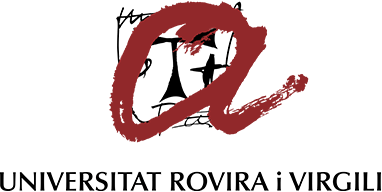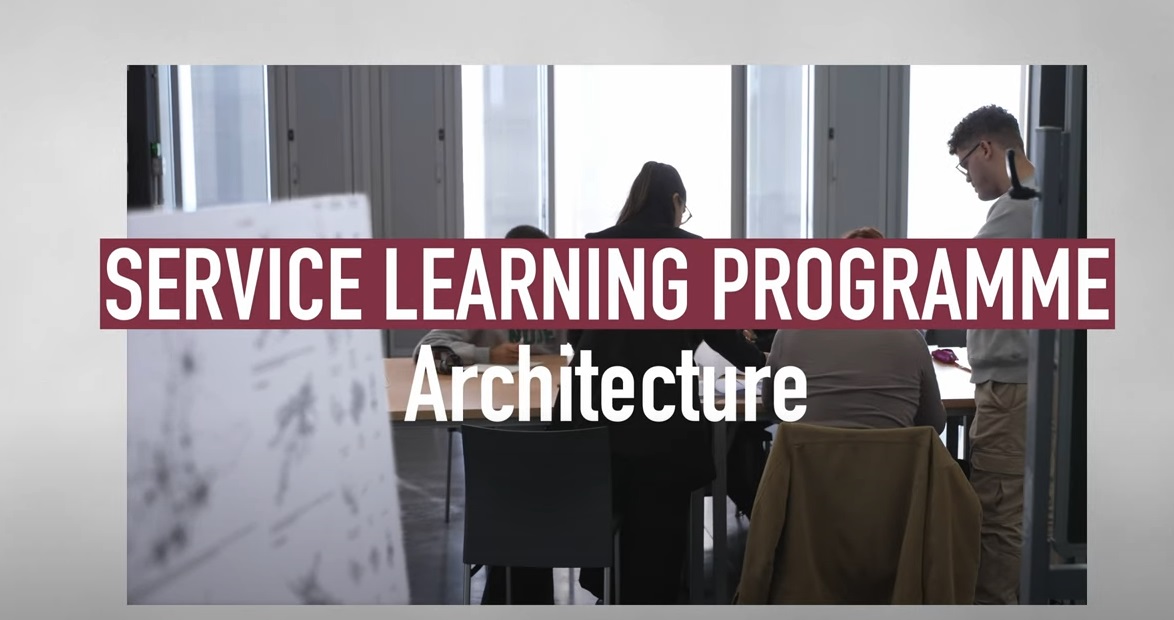Service Learning in the Bachelor's Degree in Architecture
- Third-year courses
- Fourth-year courses
- Sustainability in the contemporary city
- Architectural heritage - analysis and interventions
- Subject - Theory and Practice of Restoring the Architectural Heritage
- Subject - Facilities III
- Final Bachelor’s Degree Project - Design of a wine route in the municipalities of Falset and Marçà
- Final Bachelor’s Degree Project - Analysis and recovery of historical-natural spaces in Tamarit
- Bachelor’s thesis - Proposal to use an outside space in the modernist building of the Cooperativa Obrera (Workers Cooperative)
- Bachelor’s thesis – Energy sustainability for a modernist building used for cultural purposes in Tarragona
- Bachelor’s thesis - Implementation of an architectural proposal with the Tarragona City Council
- Fifth-year courses
- Optional courses
Construction IV
- Coordination: Sergio Coll Pla (sergio.coll(ELIMINAR)@urv.cat)
- Organisation: Sant Pau de Reus School.
- Summary: The subject Construction IV introduces students to what is involved in a technical architectural project. The first practical project shows them that the technical solutions used need to be appropriate to the needs of the project. Thus, the exercise requires the student to find a technical solution to a small project linked to a real situation: a school playground. The project involves two aspects of great importance: first, the approach to children and families, the problems of growth and the need to constantly adapt to new spaces and challenges, and the playground as a space for learning and self-experimentation under the control of the school; and, second, the approach to tools, new materials and new study concepts through experimentation with non-toxic and safe biodegradable materials.
Sustainability in the contemporary city
- Coordination: Carles Barberà Escoí (carlos.barbera(ELIMINAR)@urv.cat)
- Organisation: Lluis Domènech i Montaner Secondary School, Reus City Council.
- Summary: There are two projects. The first is carried out with the Lluís Domènech i Montaner Secondary School, a very old building that has been properly maintained, but which shows deficiencies in terms of energy efficiency. Architecture students do real practical work and also come into first-hand contact with the current situation of public buildings. They become aware of the need to act to improve energy efficiency, and are proud to be of use to the educational community because their work will be made available to the school so that it can decide what measures to apply. The center will be subjected to an energy audit that, although not a professional one, will help to identify the main problems regarding the management of energy resources. In this way, we can propose economic solutions that have high energy savings. In the second project, students must diagnose the bicycle transportation needs of the city of Reus and propose different alternatives based on the possibilities of using municipal facilities, as well as road networks and connection nodes. The student body experiences the difficulty of promoting sustainable mobility measures in terms of both cost and the habits of the general public. The service is provided to the Reus City Council, which will receive assessments on the Bicycle Implementation Plan so that the Plan and the service can be improved.
Architectural heritage: analysis and interventions
- Coordination: Agustí Costa Jover (agusti.costa(ELIMINAR)@urv.cat)
- Organisation:
- Academic year 2017-18: Reus City Council - Reus and Baix Camp Funeral Services.
- Academic year 2018-19: Xerta Town Council.
- Academic year 2020-21: Limonium. Pont del Diable.
- Summary: Cultural heritage today is a complex concept that encompasses different types of heritage: intangible, natural, movable and immovable (built). Students on this course analyse and work on a component of built cultural heritage. Every year a different case study is proposed, trying as far as possible to avoid the more conventional options. The work raises student awareness of the architectural heritage, and they acquire the ability to understand, analyze and finally propose. The work also fulfils the social function of valuing and emphasizing the main features of the built heritage so that it can be appropriated as a community asset. It also establishes a base of knowledge, often unpublished, that can be used for other purposes (for example, education or the maintenance of the heritage asset itself).



Subject: Theory and Practice of Restoring the Architectural Heritage
- Coordination: Agustí Costa Jover (agusti.costa(ELIMINAR)@urv.cat)
- Organisation: Ajuntament de Tarragona - Patrimoni històric i territori (Tarragona City Council - Historic Heritage and Territory)
- Summary: Cultural heritage is nowadays a complex concept that encompasses different types of heritage: intangible, natural, movable and immovable (built). For this project, students analysed a feature of interest for the heritage (a building, an urban space, etc.) to identify the alterations it had undergone throughout its history and the intervention criteria applied. In addition, students create new knowledge that can be used by other initiatives such as education or the maintenance of the heritage site. The objective of this service learning experience was to raise students' awareness of the architectural heritage and to develop specific resources to understand, analyse and evaluate a heritage site, and then make a proposal. The service learning experience also fulfils a social objective by valuing and emphasising the main characteristics of the architectural heritage, thus facilitating its appropriation as a community asset.
Subject: Facilities III
- Coordination: Sergi Coll Pla (sergi.coll(ELIMINAR)@urv.cat)
- Organisation: Òrgan de Gestió del Complex Educatiu de Tarragona (Management Board of the Educational Complex of Tarragona).
- Summary: The objective of this SL experience was to use technical concepts to understand the daily problems of a building. The specific tasks students performed in this compulsory three-credit fourth-year course were: thermal calculations, a thermal resolution proposal, a study of external envelope materials, and a survey of the different parts of the building. For the final task, they made a proposal that addressed social and building needs. It took place during the academic year 2022-2023.
- Video:
Subject: Pathologies and Rehabilitation
- Coordination: Agustí Costa Jover (agusti.costa(ELIMINAR)@urv.cat)
- Organisation:
- Academic year 2018-2019: Ajuntament de L'Aldea (L'Aldea Town Council)
- Academic year 2019-2020: Ajuntament de L'Ampolla (L'Ampolla Town Council)
- Academic year 2021-2022: Ajuntament de Reus - Brigades Municipals (Reus City Council - Public Works Department).
- Academic year 2022-2023: Òrgan de Gestió del Complex Educatiu de Tarragona (Management Board of the Educational Complex of Tarragona).
- Summary: Constructive pathology is the science that studies the construction problems that appear in a building (or in one of its units) after its completion. Rehabilitation is the set of actions that aim to make a building suitable again for normal use by improving it or adapting it to current requirements. Diagnosis is the process for determining the state of an existing building and the technical measures that may be necessary to guarantee its conservation, and/or its adaptation to a new use. The objective of this service learning experience was to conduct the whole process of rehabilitation, which included an assessment of the current state of a building, a systematisation of defects and pathological processes, and a proposal for intervention and maintenance. In the academic year 2018-2019, students worked on ten farmhouses and a hermitage in the town of L'Aldea. They analysed the conditions of the land, the functionalities of the buildings and their importance in the region. With this information, they made proposals to restore the functionality of the buildings. In the academic year 2021-2022, students worked on the following buildings in the city of Reus: Cal Massó, Centre Cívic de Llevant, Centre Cívic Mas Abelló, Escola Giny, Mas Carandell, Mas Iglesias, and Mercat del Camp.

Video:
Territory and Landscape. Territorial Projects
- Coordination: Sergi Saladié Gil (sergi.saladie(ELIMINAR)@urv.cat)
- Organisation:
- Academic year 2012-13: Riudecols Town Council, Pinell de Brai Town Council, Tarragona Chemical Business Association.
- Academic year 2013-14: Institute of Valls Studies, Plataforma Salvem la Platja Llarga i el Bosc de la Marquesa, La Canonja 3. People, Landscape, Sustainability, Consortium for the preservation of the agricultural landscape of the plana de secà de l'Alt Camp
- Academic year 2014-15: Assembly Stop BCN World, GEPEC, Barri Immaculada Residents Association, Association for the Defense of the Territory and Heritage of Riudecols (DELTERPA).
- Academic year 2018-19: La Canonja School.
- Academic year 2019-20: Renau Town Council and La Sínia Environmental Association.
- Academic year 2021-22: Associació d'Amics de la Platja Naturista del Torn
- Summary: The students spend the practical part of the subject (3 credits) in regions that have special dynamics. By interacting with regional agents, they try to to plan and manage the corresponding landscapes. The students analyse the region, engage in field work and make proposals for improving the quality of the landscape. They work in groups that focus on aspects of the municipalities they work with, and every year they work with different municipalities.
Interdisciplinary workshop: Hidden Reus
- Coordination: Jordi Sardà Ferran (jordi.sardaf(ELIMINAR)@urv.cat)
- Organisation: Espais Ocults Association.
- Summary: The experience is very enriching not only because it involves the area of architecture and history, but also because it deals directly with people in all phases of the activity. The team work involves people from many areas, origins and concerns. The students will work, learn and acquire experiences of all kinds and at the same time they will have fun. In addition, they will work on a project almost from the very beginning to the end.
Archeology and Architecture in heritage restoration
- Coordination: Roger Miralles i Jori (roger.miralles(ELIMINAR)@urv.cat)
- Organisation: Tortosa Town Council.
- Summary:
- The optional subject "Archaeology and Architecture in Heritage Restoration" aims to reflect on the role these disciplines play in built heritage. The project addresses real problems and looks for imaginative solutions, which go beyond the regulatory framework.
Final Bachelor’s Degree Project: Design of a wine route in the municipalities of Falset and Marçà
- Coordination: Sergio Coll Pla (sergio.coll(ELIMINAR)@urv.cat)
- Organisation: Falset-Marçà Cooperative.
- Summary: The construction of heritage buildings and architectural intervention in heritage environments is one of the most emotional tasks in architecture. This service-learning project was undertaken during the 2019-20 academic year, with the Falset-Marçà Cooperative, located in a modernist building by the architect Cesar Martinell, who built more than 40 agricultural buildings in his professional life. The project focused on the Falset-Marçà Cooperative building and the architectural intervention in its surroundings.
Final Bachelor's Degree Project: Analysis and recovery of historical-natural spaces in Tamarit
- Coordination: Agusti Costa Jover (agusti.costa(ELIMINAR)@urv.cat)
- Organisation: La Sínia Environmental Association.
- Summary: On the Tamarit beach in the municipality of Tarragona, built on the Rock of Gaià, there is a perfectly preserved bunker or machine gun nest Located at a strategic point of the alluvial plain at the mouth of the Gaià, we believe it would be interesting to use this space as both a centre for interpreting the historical memory and a seabird observatory. In this area, there is also another smaller bunker, a civil war shelter, and the remains of a sunken Republican ship off the coast.
Bachelor's thesis: Proposal to use an outside space in the modernist building of the Cooperativa Obrera (Workers Cooperative)
- Coordination: Sergio Coll Pla (sergio.coll(ELIMINAR)@urv.cat)
- Organisation: Cooperativa Obrera Tarraconense - COT (Workers Cooperative of Tarragona)
- Summary: The objective of this service learning experience was to write a bachelor's thesis within the framework of the Service Learning programme and in collaboration with the Cooperativa Obrera Tarraconense (COT) during the academic year 2021-2022. The assignment consisted of a proposal to use an outside space in the modernist building of the Cooperativa Obrera Tarraconense. The student had to make a reflection and a realistic evaluation of the requests, needs and possibilities of architectural development of the existing building as well as its connection with the rest of the city.
Bachelor's thesis: Energy sustainability for a modernist building used for cultural purposes in Tarragona
- Coordination: Sergio Coll Pla (sergio.coll(ELIMINAR)@urv.cat)
- Organisation: Cooperativa Obrera Tarraconense - COT (Workers Cooperative of Tarragona)
- Summary: The objective of this service learning experience was to write a bachelor's thesis within the framework of the Service Learning programme and in collaboration with the Cooperativa Obrera Tarraconense (COT) during the academic year 2021-2022. The assignment consisted of studying the energy sustainability of a modernist building used for cultural purposes in Tarragona. The student had to reflect on and make a realistic evaluation of the requests, needs and possibilities of the existing building in terms of its architectural development and its connection with the rest of the city.
Bachelor's thesis: Implementation of an architectural proposal with the Tarragona City Council
- Coordination: Sergio Coll Pla (sergio.coll(ELIMINAR)@urv.cat)
- Organisation: Ajuntament de Tarragona - Conselleria de Patrimoni Històric (Tarragona City Council - Department of Historical Heritage)
- Summary: The objective of this service learning experience was to produce a bachelor's thesis based on the experience of coordinating with the Tarragona City Council during the academic year 2021-2022. The student had to reflect on and make a realistic evaluation of the requests, needs and possibilities of the existing building in terms of its architectural development and its connection with the rest of the city.




